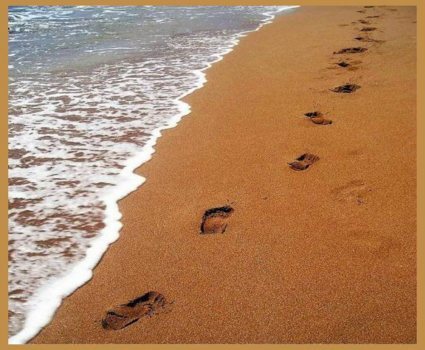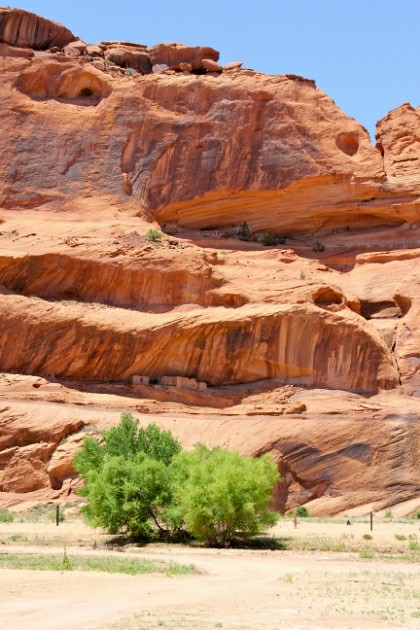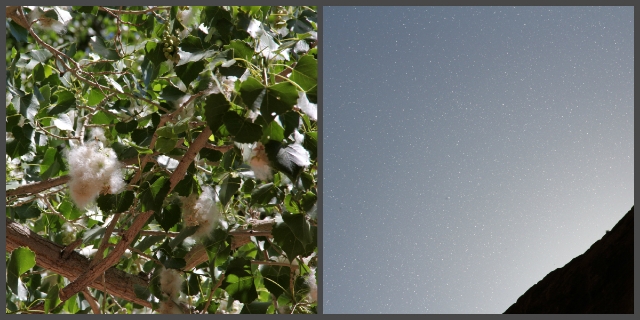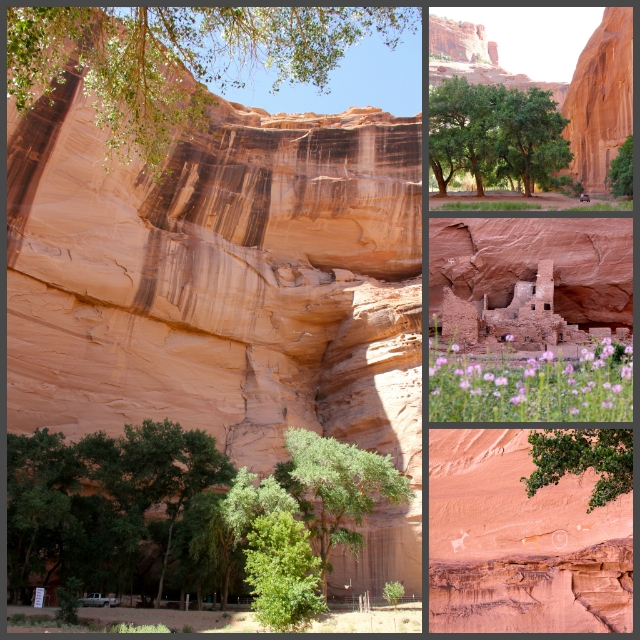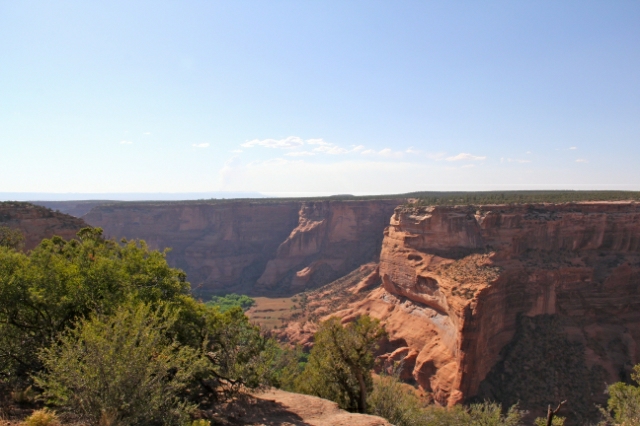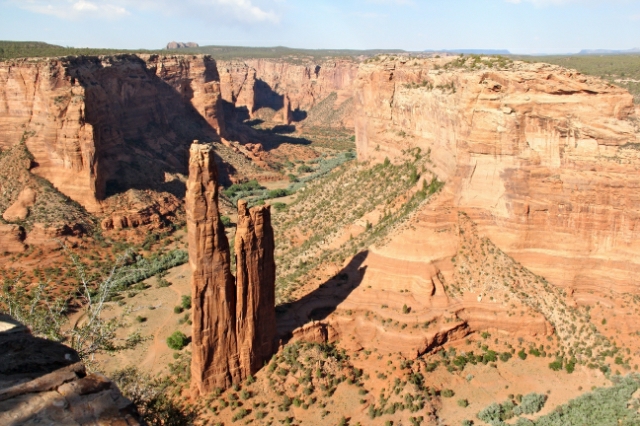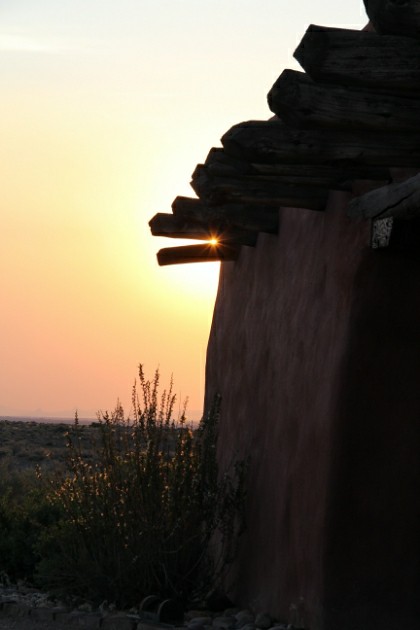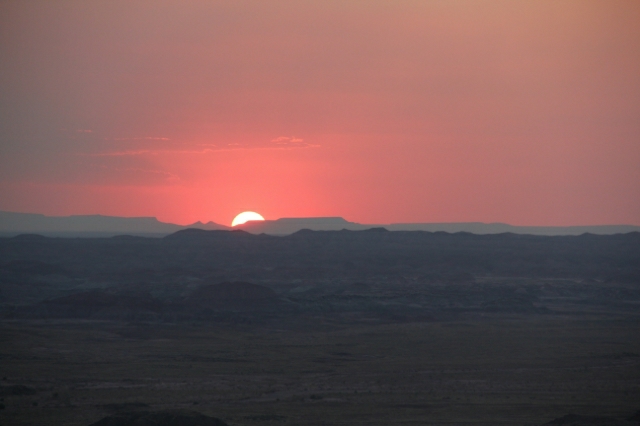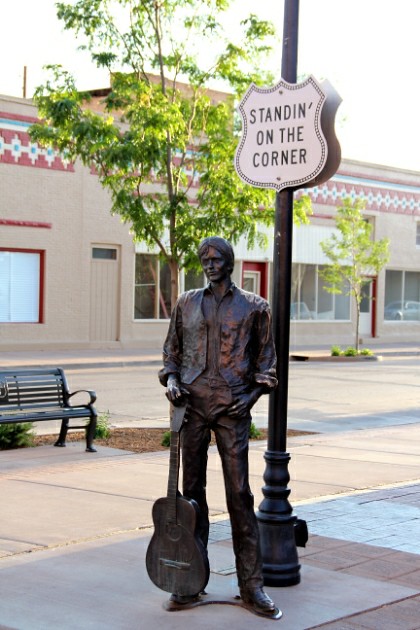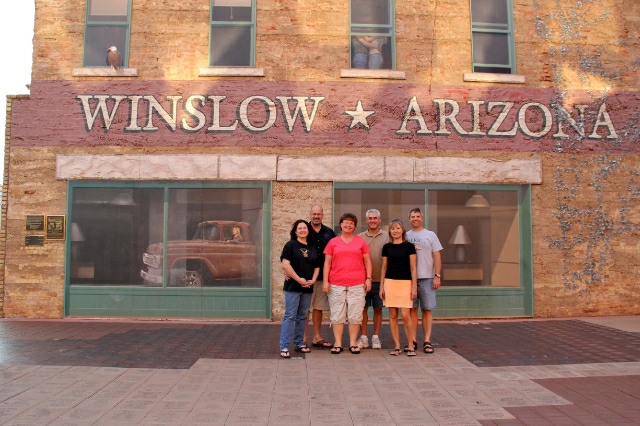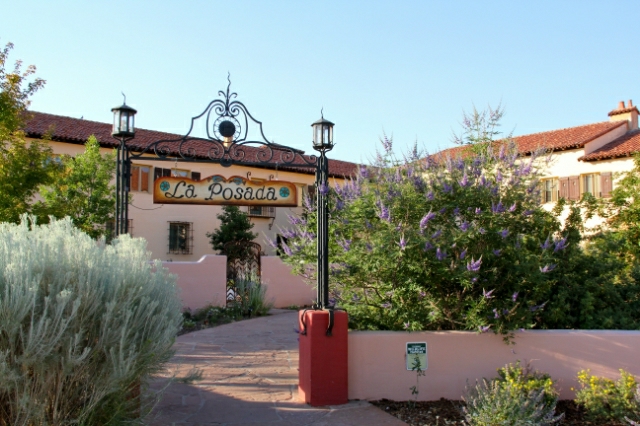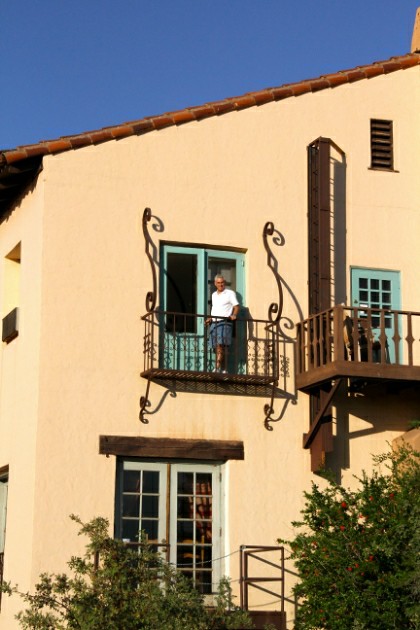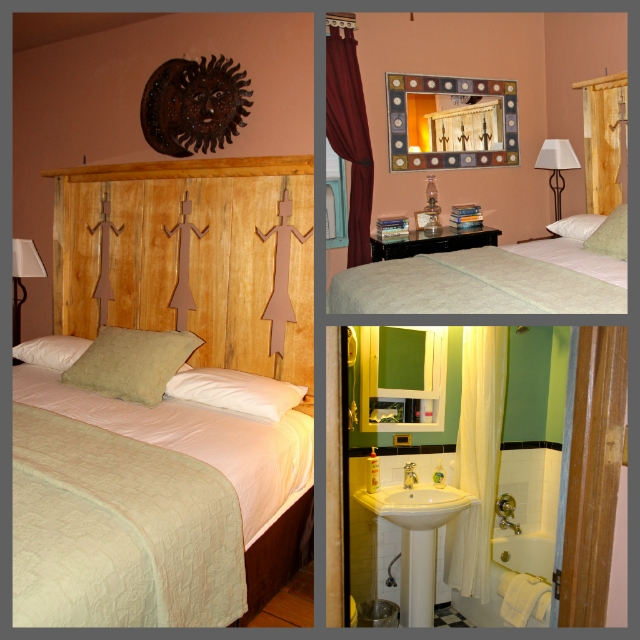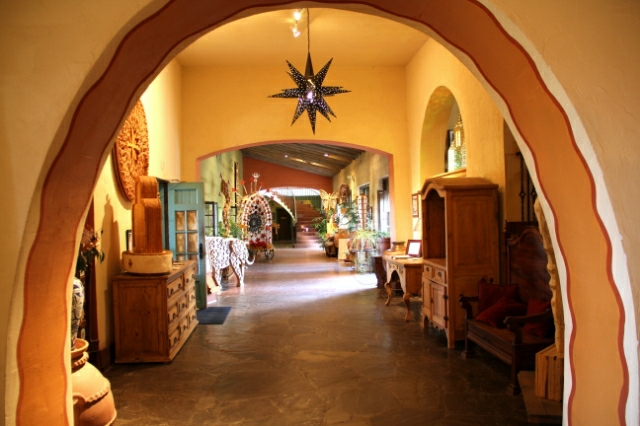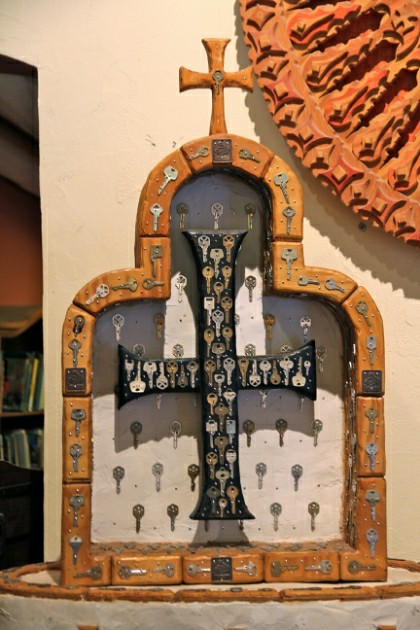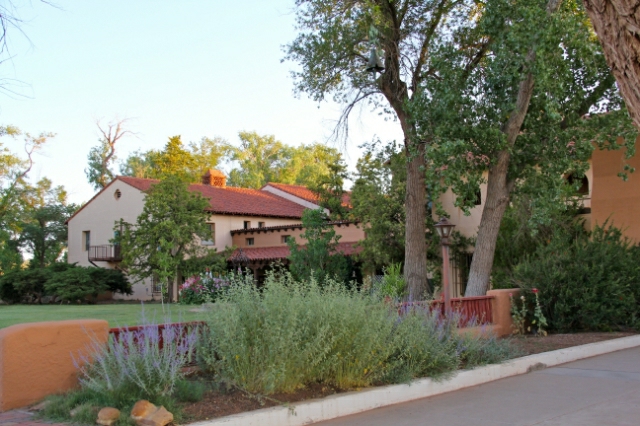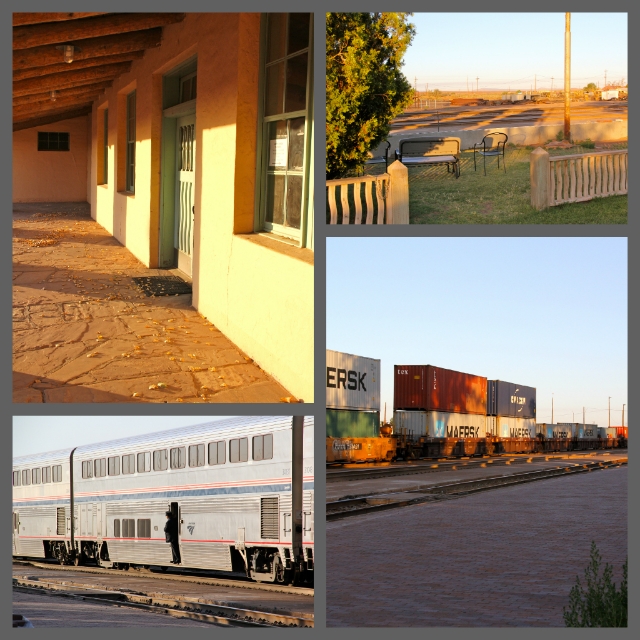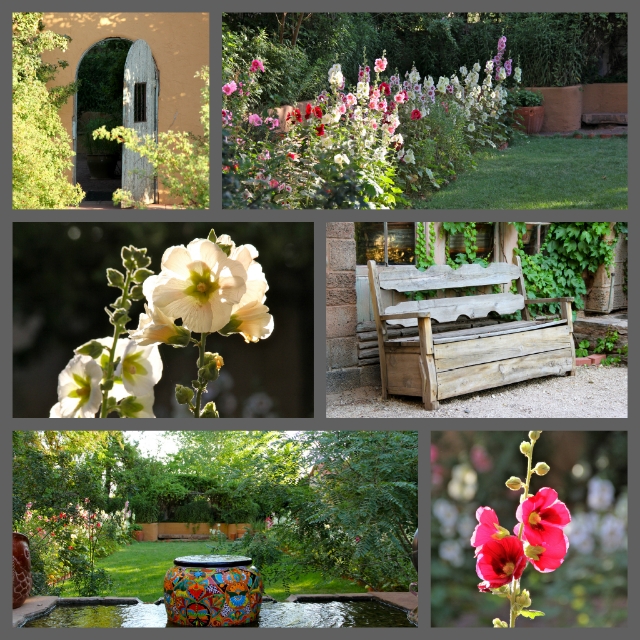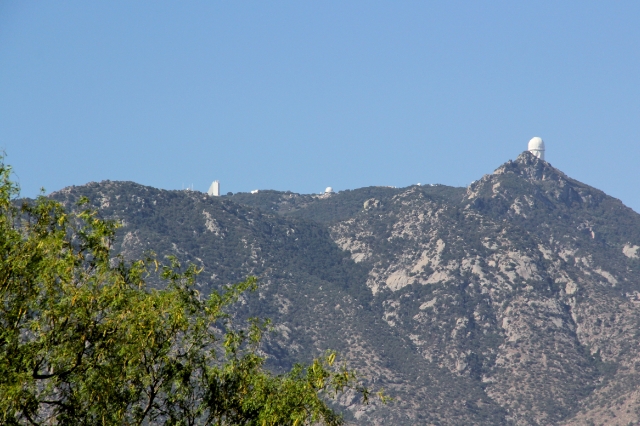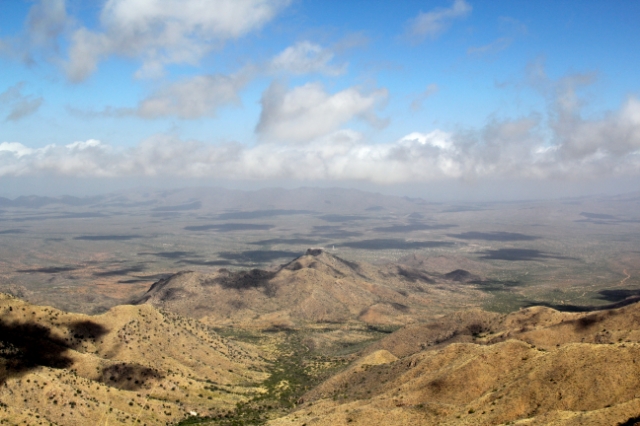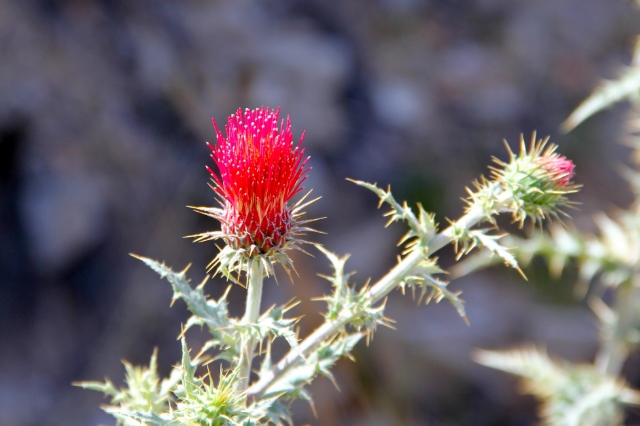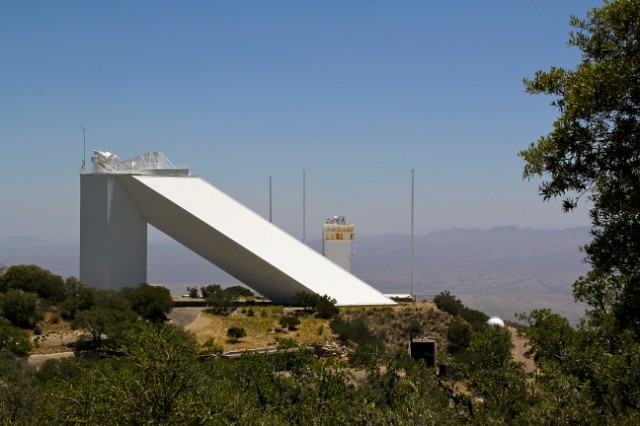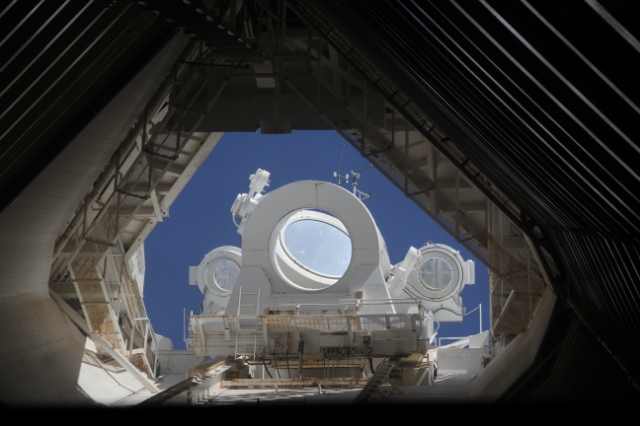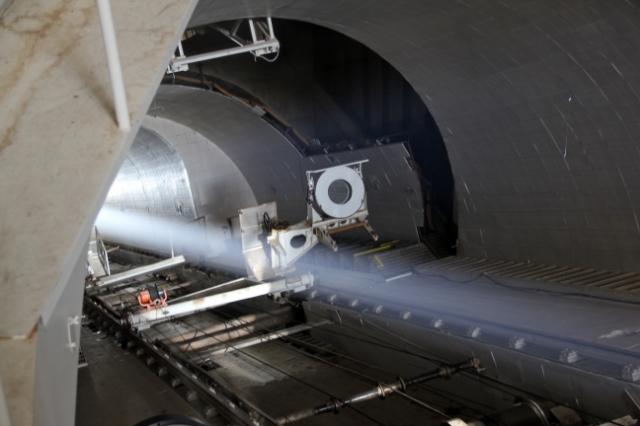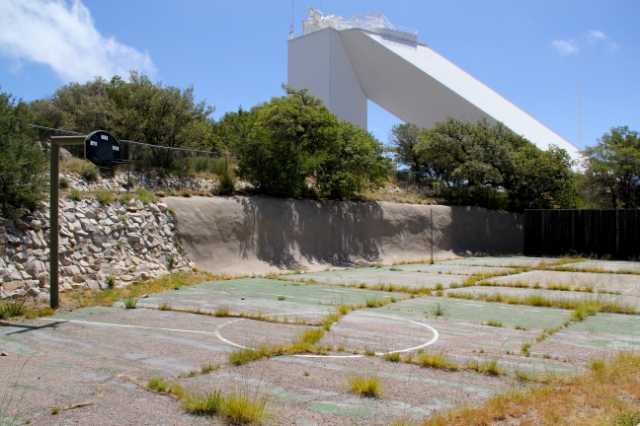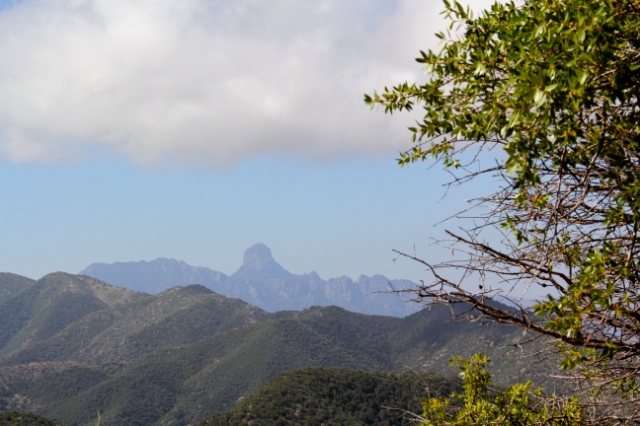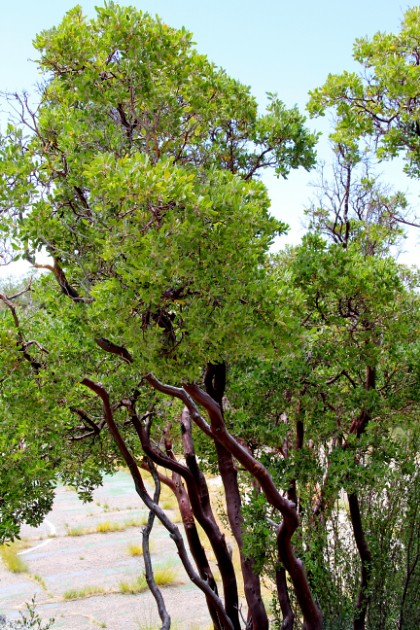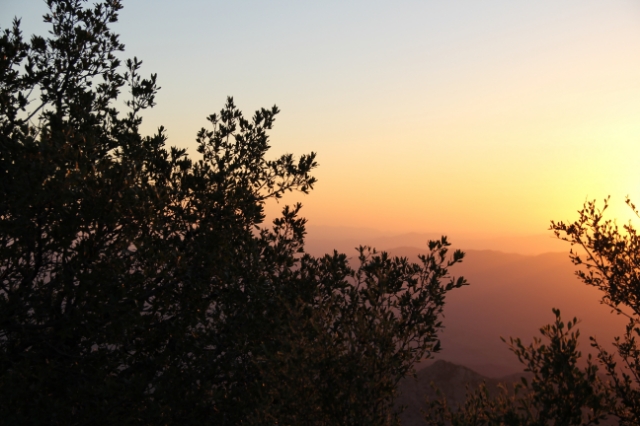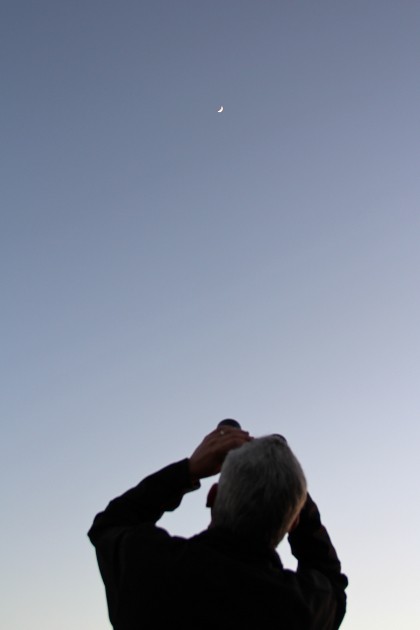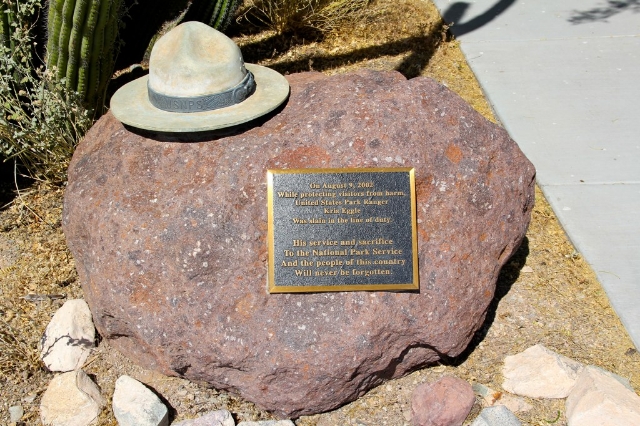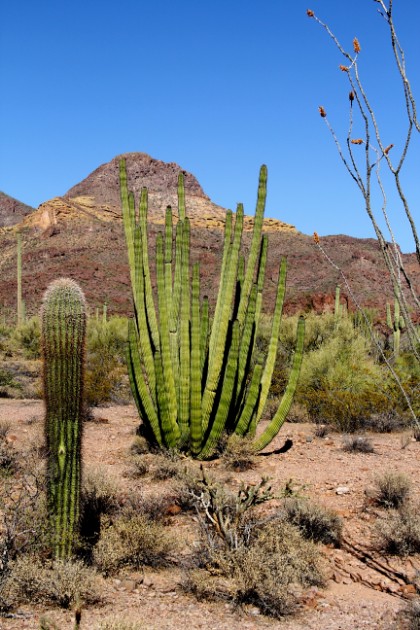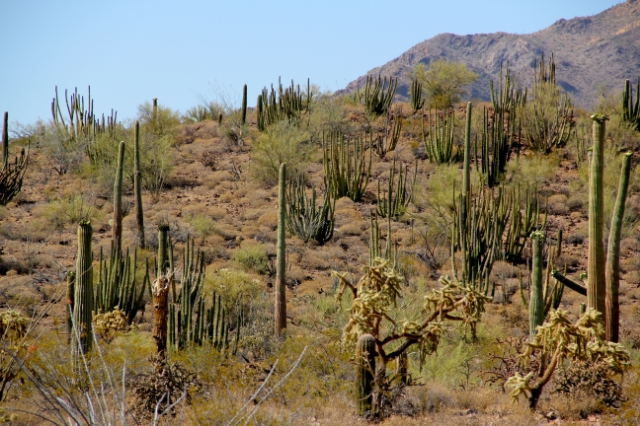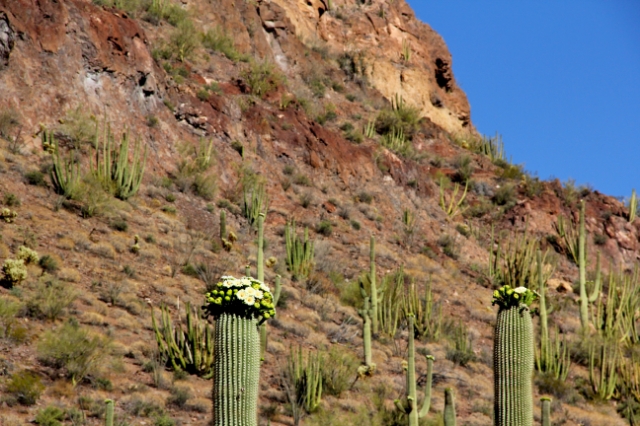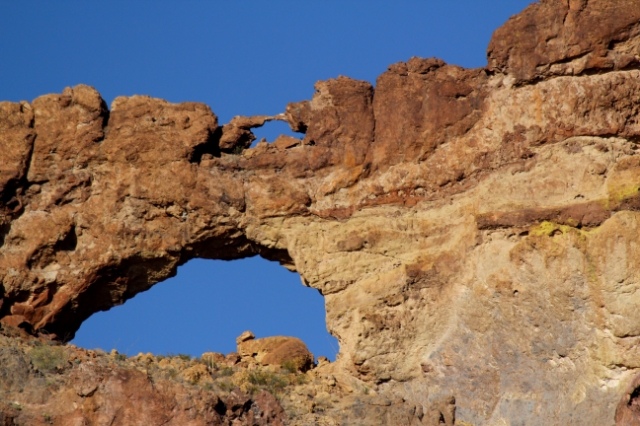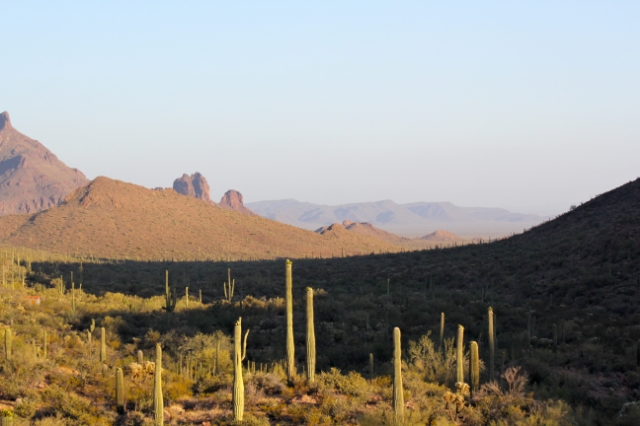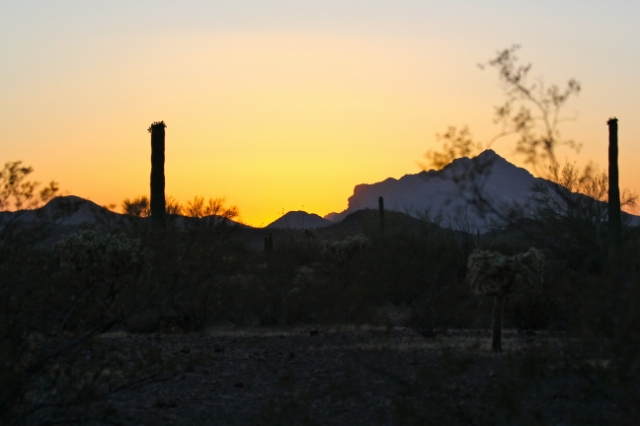President Herbert Hoover, by presidential decree, made Canyon de Chelly a national monument in 1931. Visitors can see the wonderful views from top-side and peruse the Visitor Center at no charge. But going into the canyon is restricted to only those with a Navajo guide.
We met our guide, Oscar Bia,whose last name was "Americanized" during a US census, at the Holiday Inn in Chinle (just outside the park). His translated Navajo name is "Boy Who Runs in Canyon" but we just called him "Oscar." We loaded our gear (mostly water bottles!) in his 4-wheel drive suburban, obtained a permit from the US Park Service and headed into the canyon. Once we passed the entrance booth into the canyon, the paved road ended and dirt and sand ruts as deep as cantaloups began. Oscar engaged the 4-wheel drive and we were off for an adventure!
The rock sides of the canyon start at just a few feet high and gradually become taller and taller.
As we drove, Oscar told us about himself, his family and his people. He has lived in the canyon all his life. His parents and siblings moved to New Mexico when he was about eight but he stayed with his grandparents in the canyon. His grandfather taught him the old ways but also insisted he go to school so he could write the stories down. Navajo history was an oral one until very recently. Young people today are not learning the Navajo language so their history must be written before it is lost forever.
We saw many petroglyphs on the walls of the canyon. Oscar explained that some were done by the "Ancient Ones", some by the Hopi Indians who also lived in the canyon for a time and some by the Navajo Indians. The ones that look like hand prints are "signatures" and indicate that different people (clans) lived there.
We saw many cliff dwellings of different sizes and designs. From the time he was a young boy, Oscar spent his days exploring the canyon, including all of the cliff dwellings and the many side canyons. He learned from an early age to climb up the sides of the canyon; it was how he got to his school bus stop!
Some of the cliff dwellings were just a hundred feet or so off the canyon floor.
And sometimes there would be one even farther up- almost like a 2-story dwelling. Oscar said usually it was because water flooded the canyon and they had to climb to higher ground. Notice how they are situated under rock outcroppings- shelter from rain and wind.
Most of the big trees are cottonwoods... and they were in full "cotton production" when we were there. The fluffy "cotton" was floating everywhere getting in our hair and eyes.
The fluffy "cotton" is actually the fruit of the female cottonwood trees and carries the seeds as the wind blows. Although it is a nuisance, the cottony fluff has no allergenic properties. If you look closely at the photo on the right, you can see the fluff floating in the air.
We stopped quite a bit along the way as Oscar regaled us with stories; some were stories handed down from generation to generation about the "Ancient Ones" and others were stories about his life growing up in the canyon. He told us that as a young man, he was exploring some ruins in Canyon del Muerto, a side canyon with a history of death. At one time, the Mexican Army was looking for gold when they ran into a young boy who was running from an abusive father. The Army tried to help him but ended up in a massacre with many of the soldiers getting killed or wounded. Inside one of the ruins Oscar found a skeleton leaning up against the wall dressed in an Army uniform and still clutching his rifle.
The canyon walls have many stories. I wondered about the people who walked the floor of the canyon hundreds or thousands of years ago. Were their lives similar to mine- raising a family, enjoying friendships? And how were they different? I am quite certain they were in better shape than any of us since they climbed to the top of the canyon regularly!
There were only two stops that had any "retail business." The Navajo make beautiful jewelry and I was happy to find a couple of stands with local artisans. Laurie, Ursi and I all found some jewelry we liked. I especially enjoyed talking to the woman who made the necklace I got for our granddaughter. As she shortened it, she told me the meaning of the stones and what they represented.
This stop was shaded by the canyon walls and was cool and refreshing. In addition to the jewelry stands, there was also a food concession selling Indian fry bread- a tasty treat white people cover with powdered sugar. The Navajos selling the fry bread told us they eat it with salt, not powdered sugar, although they had both available. After trying it, we agreed it was a tastier combination!
That was our last stop and as we headed back out of the canyon, Oscar continued to tell us stories... about being a guide for archeologists and anthropologists and how, in his experience, they didn't listen to the tribal elders but made their own interpretations. Hollywood has made two movies in Canyon de Chelly- Mackenna's Gold (1969) with Gregory Peck and The Lone Ranger (coming out summer 2013) with Johnny Depp. Oscar was the guide for the movie crew filming The Lone Ranger and he said Johnny Depp sat in my seat!! Oscar also said he wouldn't talk to him until Oscar threatened to make him walk out!
We greatly enjoyed our guided tour of the inside of the canyon- it's definitely worth doing! There are half a dozen or so licensed guides- you can find Oscar at Canyon Ancient Jeep Tours. After bidding farewell to Oscar, we ventured along the canyon topside to get an entirely different perspective.
"Canyon de Chelly- a spectacular sculpted petrified sand dune created by wind and water!"
(from Oscar's business card)
Boys will be boys (at any age) and climb on rocks whenever they get a chance!
The Navajo culture is matriarchal. Oscar told us that just about all women are your "aunties" and like Jewish people, the "bloodline" is through the mother. In ancient times, they had several deities and quite a few were women. Holy Spider Woman was an important deity as she taught the people to weave.
The huge monolith rising from the floor of the canyon is "Tsé Na'ashjééii"- or Spider Rock in honor of Holy Spider Woman.
No rock climbing for us- but we did wonder how difficult it would be to climb Spider Rock since being on the top of it would be an awesome photo!
When we were finished at Canyon de Chelly, we hurried to the Petrified Forest and by default, the Painted Desert. As we were driving south through the Navajo Reservation, most of which is not fenced, we saw a variety of "wild life" on or very near the road: a deer meandered across the road before effortlessly leaping across a fence, a baby horse grazing by the side of the road (mama did not look concerned at all), two cows- one of which required us coming to a complete stop before he decided to move along. But the funniest sight was a pack of eight or ten dogs- mutts of every size, age and description- that were running along the opposite side of the road before deciding to cross the road... first the "leader"... then a couple of smaller dogs... and a few more... and another one... a couple more came across... and then the "old man" struggled across the road, limping a bit as he went, stopping to rest in the middle while ALL the other dogs sat and watched (encouraged?) him from the opposite side. When he finally made it across the road, the other dogs got up and continued on their way with the "old man" bringing up the rear.
We finally made it to the Petrified Forest (which we weren't officially going to until the next day) and made our way to Kachina Point to watch the sun set on the Painted Desert which runs along side the northwestern part of the Petrified Forest.
The sun was peaking between the eaves of the Painted Desert Inn, an old Fred Harvey inn that now houses a gift shop and snack bar, as we arrived.
The sun dipped lower and lower on the horizon, illuminating the colors of the Painted Desert as it went down.
And then it was dark. What a beautiful and peaceful way to end our day!
Thumb Up or Down: UP!!!!
Miles Round Trip: see next post
Miles To Date: see next post
Percent of List Completed: 61%
Date of This Trip: June 15-17, 2012
